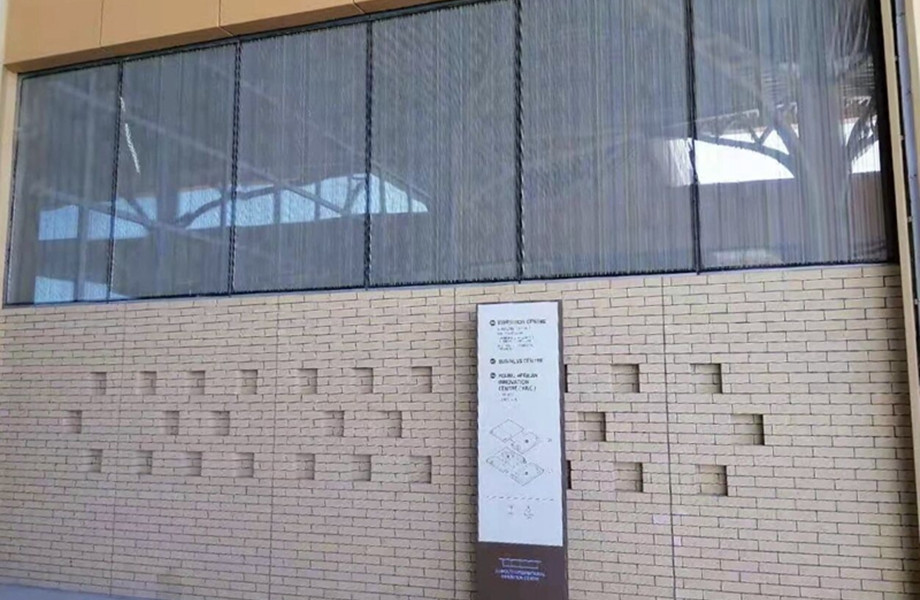As common materials in modern buildings, insulating glass and laminated insulating glass are widely used in the fields of architecture and home furnishing, and their application scenarios in architectural design and decoration have attracted much attention. These materials have a beautiful appearance and a variety of practical functions, providing important support and protection for buildings.
insulated DGU glazed glass window door
6296.jpg)
As a glass product with functions such as heat insulation, sound insulation, anti-fog, and anti-freeze, insulating glass has many application scenarios in buildings. In modern buildings, insulating glass is often used in windows, curtain walls, and other parts of buildings. Through the application of insulating glass, the thermal insulation performance of the building can be effectively improved, energy consumption can be reduced, and the operating cost of the building can be reduced. At the same time, insulating glass can also effectively soundproof, improve the comfort inside the building, and provide residents with a quiet and comfortable living environment.
0117.jpg)
Insulating glass is commonly used in windows to provide good insulation and sound insulation. In the curtain walls of large buildings, the use of insulating glass can reduce energy consumption and improve comfort. Insulating glass used in sunrooms can effectively isolate heat and keep the sunroom cool in summer. In addition to these application scenarios, there are many other places where insulating glass can be used. For example, insulating glass is used in residential doors and windows to provide lighting, ventilation and safety protection for the residence. Insulating glass is used in doors and windows of commercial buildings to meet lighting and ventilation needs. Insulating glass is used in office doors and windows where sound insulation and energy saving are considered to create a comfortable working environment.
|
Customized configuration specifications |
|
|
Common glass configuration thickness(mm) |
5+6A+5, 5+9A+5, 5+12A+5, 5+16A+5, 5+18A+5 6+6A+6, 6+9A+6, 6+12A+6, 6+16A+6,6+18A+6 |
|
Colourless glass |
Ultra clear glass, clear glass |
|
Tinted glass |
Tea colored glass, gray glass, Ford blue coated glass, Ford blue glass, F green glass, F green coated glass, low transparency LOW-E glass, medium transparency LOW-E glass, high transparency LOW-E glass |
|
For more size configurations, please contact us for customization |
|
.jpg)
Application scenarios of laminated insulating glass
laminated insulating glazed glass facade
In architectural design, designers often combine insulated glass and laminated insulated glass to achieve better insulation and sound insulation effects and improve the overall performance of the building. For example, in the curtain wall design of high-rise buildings, designers may choose to use laminated hollow glass structures to achieve thermal insulation, sound insulation, and wind pressure resistance performance of the curtain wall. At the same time, in the design of building structures, laminated insulated glass can effectively increase the load-bearing capacity of structural parts such as beams and columns, and improve the overall safety of buildings.
1120.jpg)
The bending strength of laminated insulating glass makes it suitable for windows and curtain walls of high-rise buildings. The doors and windows of villas have high requirements for insulation, sound insulation and safety, and laminated insulating glass is an ideal choice. Laminated insulating glass can resist wind pressure while maintaining good thermal insulation performance, and is suitable for sun rooms.
7916.png)
triple glazed insulated glass curtain walls
Insulating glass and laminated insulating glass have different application scenarios. As common materials in modern buildings, they play an important role in building design and decoration. They can not only improve the overall performance of the building but also increase the beauty of the building and provide better protection and support for the building. Therefore, when selecting building materials for building design and construction, designers and architects should fully consider the characteristics and application scenarios of these materials to achieve the unity of functionality, beauty, and safety of the building.


6728.jpg)
8529.jpg)
8849.jpg)
7074.png)
.jpg)


.jpg)
.jpg)
.png)
.png)
.png)
.jpg)
.jpg)